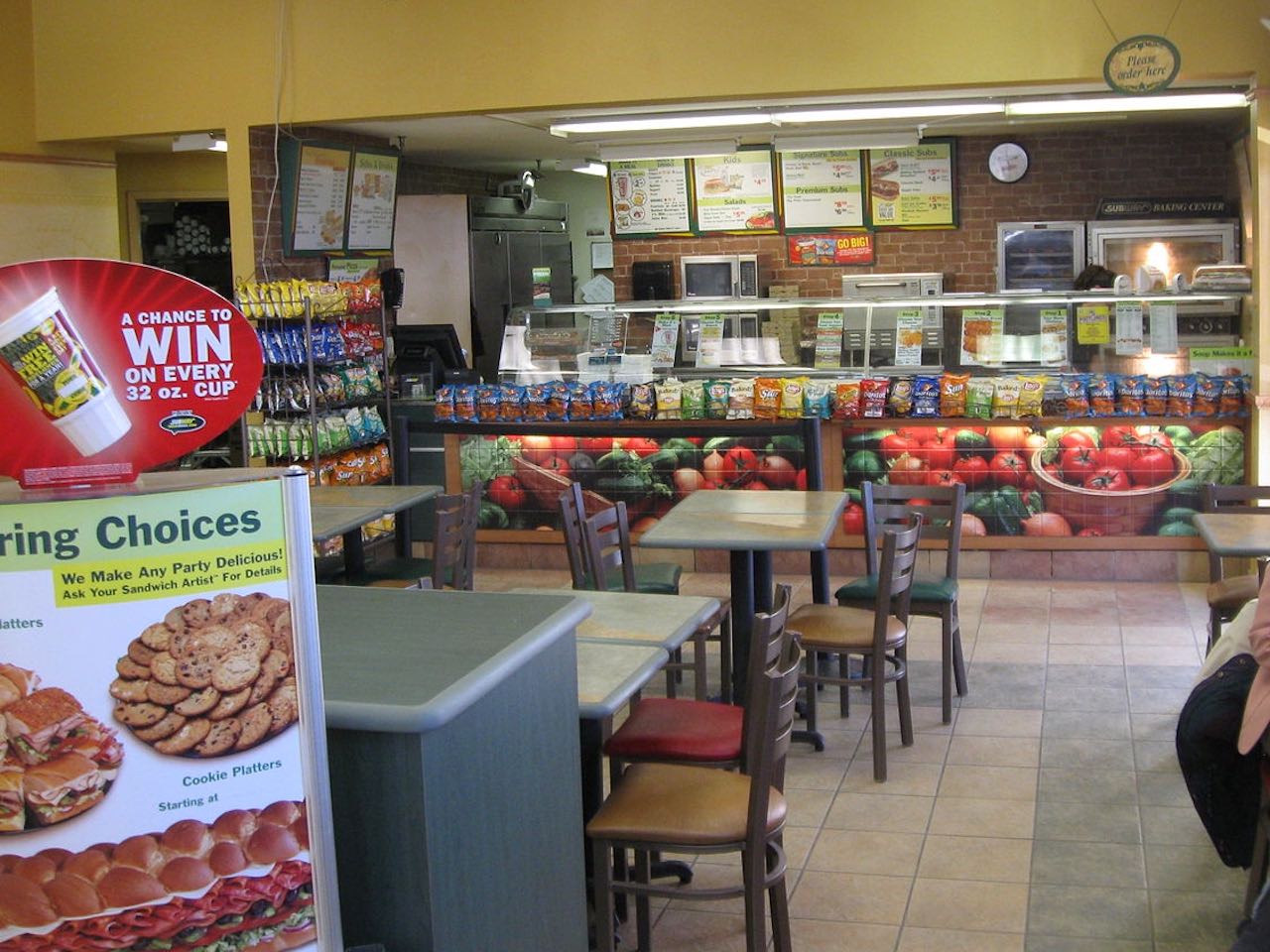
Subway’s mission and vision indicate the business purpose and goals for industry leadership while satisfying the interests of customers, franchisees, and employees. This mission statement aims to enable stakeholders whose support can drive the quick-service restaurant (QSR) business toward the fulfillment of its vision statement. The business goals and strategic objectives of the mission and vision bring Subway in competition with foodservice firms, including McDonald’s, Burger King, Wendy’s, and Starbucks. These companies offer food and beverage products that consumers can buy instead of Subway’s submarine sandwiches and drinks. Considering that the Five Forces analysis of Subway demonstrates strong competitive pressure, the company’s mission statement and vision statement influence the business organization to develop competencies for long-term competitiveness and success in the global foodservice market.
Business Purpose & Core Values. Subway’s purpose is “to help everyone be their best, every day.” This purpose statement shows the foodservice company’s value and goals in contributing to society. Subway’s mission statement relates to this business purpose by supporting customers, franchisees, and employees. Subway’s vision statement also satisfies this business purpose by ensuring product quality. The company’s three core values are exceptional service, high-quality and flavorful menu options, and nonstop evolution for improving the brand. These core values ensure the fulfillment of this business purpose in quick-service restaurant operations. Also, the practical interpretation and application of Subway’s mission statement and vision statement depend on the philosophical framework that these core values establish for business decisions.
Subway’s Mission Statement
Subway’s mission is “to fuel potential, whether it’s our guests looking for more flavorful, freshly made food choices, franchisees focused on growing their businesses or employees looking to grow professionally.” This mission statement presents a three-pronged approach to developing the submarine sandwich business. The following are the main elements of Subway’s mission:
- To fuel potential
- Flavorful and fresh food for guests
- Business growth for franchisees
- Professional growth for employees
Subway’s mission statement establishes the goal of enabling stakeholders through the business. This element links the foodservice business purpose to the company’s mission. Fueling potential can help customers, franchisees, and employees become their best. The other three elements of Subway’s mission consider the interests of these stakeholders. For example, food quality is highlighted for target consumers’ interests. The goals for guests and franchisees guide Subway’s competitive strategy and growth strategies for developing products and growing the franchise network.
The company’s mission also determines other strategies and management approaches for foodservice operations. For instance, this mission statement’s goal for workers relates to human resource management and how Subway’s organizational culture (work culture) influences employee morale, job satisfaction, and performance. In relation to the company’s core values, this mission statement, along with the vision statement, guides the strategies and programs for Subway’s sustainability and related CSR/ESG goals for stakeholders. For example, product freshness addresses consumers’ health, while the mission’s specification of business growth meets the concerns of franchisees and investors.
Subway’s Vision Statement
Subway’s vision is “to be ranked the number one Quick Service Restaurant (QSR) worldwide while maintaining the great-tasting freshness of our products that is our trademark.” This vision statement guides the business to achieve and maintain leadership in the industry. The following are the main elements of Subway’s vision:
- Top rank in the QSR industry
- Global market reach
- Great-tasting freshness of products
Subway’s vision statement directs strategies toward attaining the leading competitive position based on various factors, such as number of locations, product and service quality, consumer perception, and brand popularity. In addition, a worldwide scale of foodservice operations is stated in the company’s vision. These two elements indicate global industry leadership that requires that the business strengths and competitive advantages enumerated in the SWOT analysis of Subway should match competitive challenges in the international quick-service restaurant industry. Competitive advantages facilitate business improvement despite aggressive competition with local, regional, and multinational fast-food restaurant businesses. Also, the global scale included in this vision directs Subway’s marketing mix (4P) and strategies to account for the uniqueness of local and regional markets around the world. Moreover, this vision statement relates to the business purpose by setting the objective of ensuring product quality as the restaurant franchise company grows and achieves its goals. These elements show that Subway’s vision focuses on product quality as its food service operations continue to grow and reach the leading position in the industry.
Strategic Implications of Subway’s Mission and Vision
Subway’s mission statement represents the company’s business purpose by focusing on providing value to customers, franchisees, and employees. On the other hand, Subway’s vision statement aims for industry leadership. The company may need to work on other variables, like brand popularity and consumer perception, to ensure the achievement of this leading position in the fast-food restaurant industry. The goals and strategic objectives of the mission and vision prompt consideration for the industry and market trends outlined in the PESTEL/PESTLE analysis of Subway. These trends influence customers, employees, franchisees, and other parties relevant to the fast-food restaurant chain. Also, based on the vision statement’s leadership goal and the mission statement’s objectives of satisfying consumers, workers, and franchisees, Subway’s organizational structure (company structure) needs to ensure support for franchise operations in local and regional markets.
References
- Ariyanti, D. A., Afrianti, A. D., Yarangga, M. M., Andarini, S., & Kusumasari, I. R. (2024). Business strategy development and planning. Journal of Finance and Business Digital, 3(2), 85-94.
- Kumolu-Johnson, B. (2024). Improving service quality in the fast-food service industry. Journal of Service Science and Management, 17(1), 55-74.
- Subway Careers.
- Subway FAQs.
- The Subway Story.
- U.S. Department of Agriculture – Economic Research Service – Food Service Industry Market Segments.